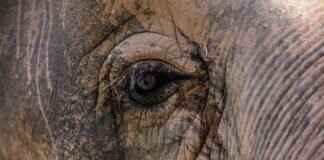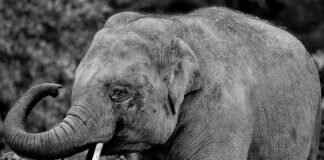In a groundbreaking discovery, a team of researchers from the Ashoka Trust for Research in Ecology and The Environment (ATREE) announced the remarkable rediscovery of a long-lost species known as Typhloperipatus williamsoni after a staggering 111 years. This ancient species, estimated to be around 220 million years old, was spotted in the picturesque Siang Valley in Arunachal Pradesh, marking a momentous occasion in the scientific community. The findings of this remarkable rediscovery were recently published in the prestigious Journal of Natural History, shedding light on a fascinating chapter in the world of evolutionary biology.
Tracing Colonial Trails
The history of Typhloperipatus williamsoni dates back to the early 20th century when it was first collected during the “Abor expedition” by Stanley Kemp and his team in December 1911 in the Siang Valley. However, since that initial discovery by Kemp, there have been no documented records of this elusive species in India. Fast forward to the years 2021 and 2023, the dedicated team of researchers from ATREE, including Surya Narayanan, D.R. Priyadarsanan, A.P. Ranjith, R. Sahanashree, and Aravind Neelavar Ananthram, along with the support of the National Geographic Society and Fellis Creation, embarked on a mission to follow the trails of the Abor expedition. To their astonishment, they encountered two individuals of Typhloperipatus williamsoni, hidden under stones during a pre-monsoon season exploration. This serendipitous discovery marked a significant moment in the scientific community, unraveling the mysteries of a long-lost species that had eluded researchers for over a century.
Living Fossils
Lead author of the paper, Mr. Narayanan, highlighted the significance of the rediscovery of Typhloperipatus williamsoni, shedding light on the evolutionary history of onychophorans. “Onycophora is a very old group, easily older than 350 million years. It has only two families and not more than 200 species. The diversity is very less,” Mr. Narayanan explained. These ancient creatures coexisted with dinosaurs and miraculously survived mass extinctions, providing a glimpse into a bygone era of Earth’s history. The molecular data from Typhloperipatus williamsoni unveiled crucial insights into the evolutionary lineage of Asian peripatids, offering a unique perspective on their biogeographic origins. The discovery not only sheds light on the past but also paves the way for future research into the evolutionary relationships of these enigmatic creatures.
Unveiling Biogeographic Mysteries
The rediscovery of Typhloperipatus williamsoni has the potential to rewrite the biogeographical narrative, challenging existing theories about the migration patterns of onychophorans across different regions. The molecular data revealed that South Asian onychophoras diverged from their neotropical and African relatives over 237 million years ago, reshaping our understanding of their evolutionary history. Surprisingly, Asian onychophoras were found to have no genetic connections to their Australian counterparts, defying conventional expectations of regional biodiversity relationships. This unexpected discovery poses intriguing questions about the dispersal patterns of these ancient creatures and their adaptation to diverse ecosystems across the globe.
More Species to Discover
In addition to the rediscovery of Typhloperipatus williamsoni, the research expedition yielded a treasure trove of new species waiting to be unveiled. From the dazzling metallic blue ant, Paraparatrechina neela, to over 15 new species of parasitic wasps, a unique mollusc, and a charming gecko, the team’s findings underscore the rich biodiversity of the Siang Valley. Mr. Priyadarshanan, a key member of the research team, expressed excitement about the ongoing discoveries and hinted at future expeditions to uncover more hidden gems in the region. The delicate balance of nature in these pristine habitats faces imminent threats from agricultural expansion, deforestation, and traditional farming practices, underscoring the urgent need for conservation efforts to protect these invaluable ecosystems.
As the scientific community celebrates the rediscovery of Typhloperipatus williamsoni, the journey to unravel the mysteries of our planet’s biodiversity continues. Each new discovery brings us closer to understanding the intricate tapestry of life on Earth and the interconnectedness of species across continents. The legacy of ancient creatures like Typhloperipatus williamsoni serves as a poignant reminder of the resilience of life and the enduring quest for knowledge that drives scientific exploration. With each expedition, researchers peel back the layers of time to reveal the hidden wonders of our natural world, inspiring awe and wonder in all who seek to unravel its mysteries.














